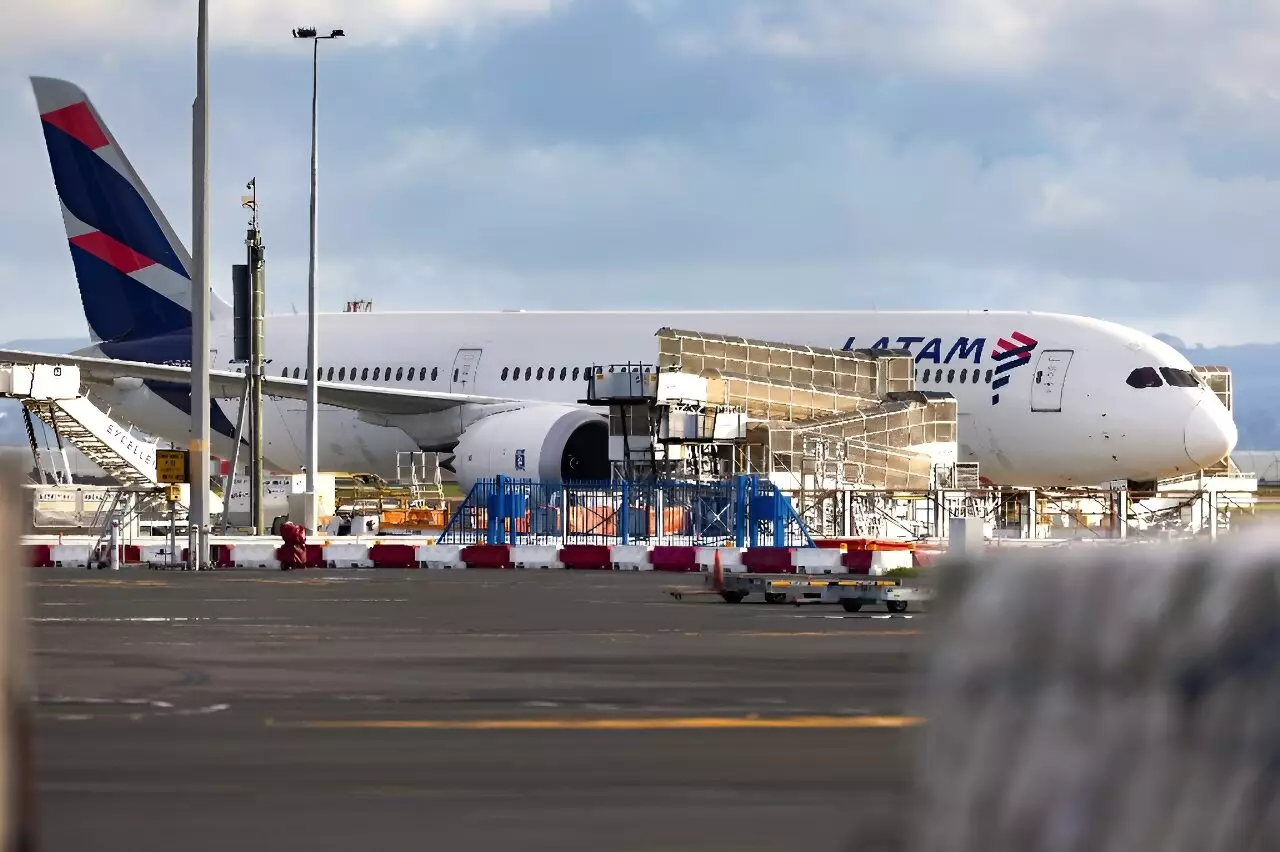Boeing, the renowned US aeronautics giant, issued a warning to airlines operating its 787 Dreamliner model following a dramatic incident involving a New Zealand-bound LATAM plane. The incident, which resulted in numerous injuries to passengers mid-flight, prompted Boeing to urge operators to inspect specific switches in the cockpit as a precautionary measure.
The Chilean airline LATAM was en route from Sydney, Australia to Auckland, New Zealand when the aircraft suddenly experienced a sharp descent, causing chaos onboard. Passengers were thrown out of their seats, with some colliding with the cabin roof. The aftermath of the incident led to 50 individuals sustaining injuries, 13 of whom required hospitalization. While LATAM initially attributed the occurrence to a “technical event,” reports from the Wall Street Journal pointed towards human error as the root cause. According to US industry sources, a crew member accidentally activated a switch on the pilot’s seat while serving a meal, resulting in the pilot being thrust into the controls and prompting a nose-down movement of the plane.
Both Boeing and LATAM have refrained from providing detailed comments on the incident, citing ongoing investigations. The US Federal Aviation Administration (FAA) has announced the formation of a Corrective Action Review Board (CARB) composed of safety experts to delve into the matter and offer recommendations to Boeing. The FAA emphasized the importance of reviewing the service bulletin related to the switches in the pilot seats, issued by Boeing in 2017.
The recent incident involving the Boeing 787 Dreamliner adds to a series of safety issues plaguing the company in recent years. Notably, the fatal crashes of the 737 MAX planes in 2018 and 2019 resulted in significant casualties, prompting widespread scrutiny of Boeing’s safety protocols. Additionally, a near-catastrophic incident earlier this year involving a Boeing 737 MAX 9 Alaska Airlines jet further underscored the company’s challenges in ensuring the airworthiness of its aircraft. The revelation that a wheel fell off a Boeing 777 jetliner bound for Japan shortly after takeoff from San Francisco has only added to Boeing’s woes, necessitating urgent action to address quality control concerns.
In response to mounting safety issues, US regulators have granted Boeing a 90-day deadline to devise a comprehensive plan to enhance its quality control processes. The Federal Aviation Administration has stressed the need for Boeing to commit to substantial improvements to ensure the safety of its aircraft and passengers. Given the string of incidents and regulatory scrutiny, Boeing’s share price has tumbled by 25 percent since the beginning of the year, signaling apprehension among investors regarding the company’s future trajectory.
The Boeing 787 Dreamliner incident serves as a stark reminder of the critical importance of stringent safety measures in the aviation industry. The factors contributing to the incident, from human error to technical malfunctions, underscore the complex challenges faced by aircraft manufacturers and operators. Moving forward, it is imperative for Boeing to prioritize safety, compliance, and transparency in order to regain trust and uphold its reputation as a leading provider of commercial aircraft.


Leave a Reply